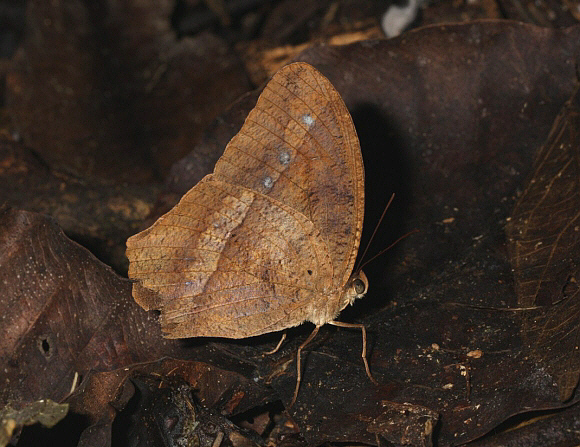
Introduction
The Morphinae includes about 150 neotropical species, of which 42 are placed in the tribe Morphini, which includes the 29 dazzling blue Morpho species, 2 Caerois species and 11 Antirrhea species.
Antirrhea watkinsi appears to be restricted to the eastern Andean foothills of Peru and Bolivia, and the lowland rainforests of Rondonia and Mato Grosso in Brazil.
Habitats
This species is restricted to rainforest habitats at altitudes between 0-1800m. The butterfly inhabits deeply shaded and swampy areas within the forest.
Lifecycle
I have no information specific to watkinsi. In most Antirrhea species the egg is pale green dome-shaped, and laid singly on the leaves of palms (Arecaceae). The fully grown larvae are typically hairy, red and yellow, with a red head and a pair of very long whip-like caudal tails. They bite out rectangular holes from the palm leaves, giving their presence away. The pupae are squarish, pale yellow with olive wing cases, and have thorn-like protuberances on the abdomen.
Adult behaviour
In common with other Antirrhea species, this butterfly is usually encountered singly, usually being found in the darkest dampest parts of the forest undergrowth, where it skulks beneath bushes in the daytime. The flight is swift, skimming and weaving just above the surface of the ground.
Males feed at dung, urine soaked ground, decomposing fruit, moulds and fungi on the forest floor. They can occasionally be seen on open paths and trails at dawn or dusk, or during heavily overcast weather.
